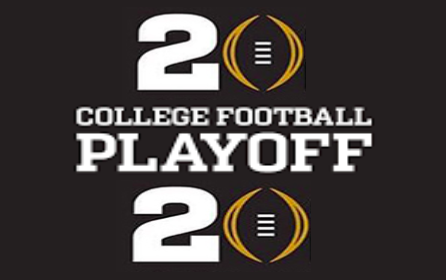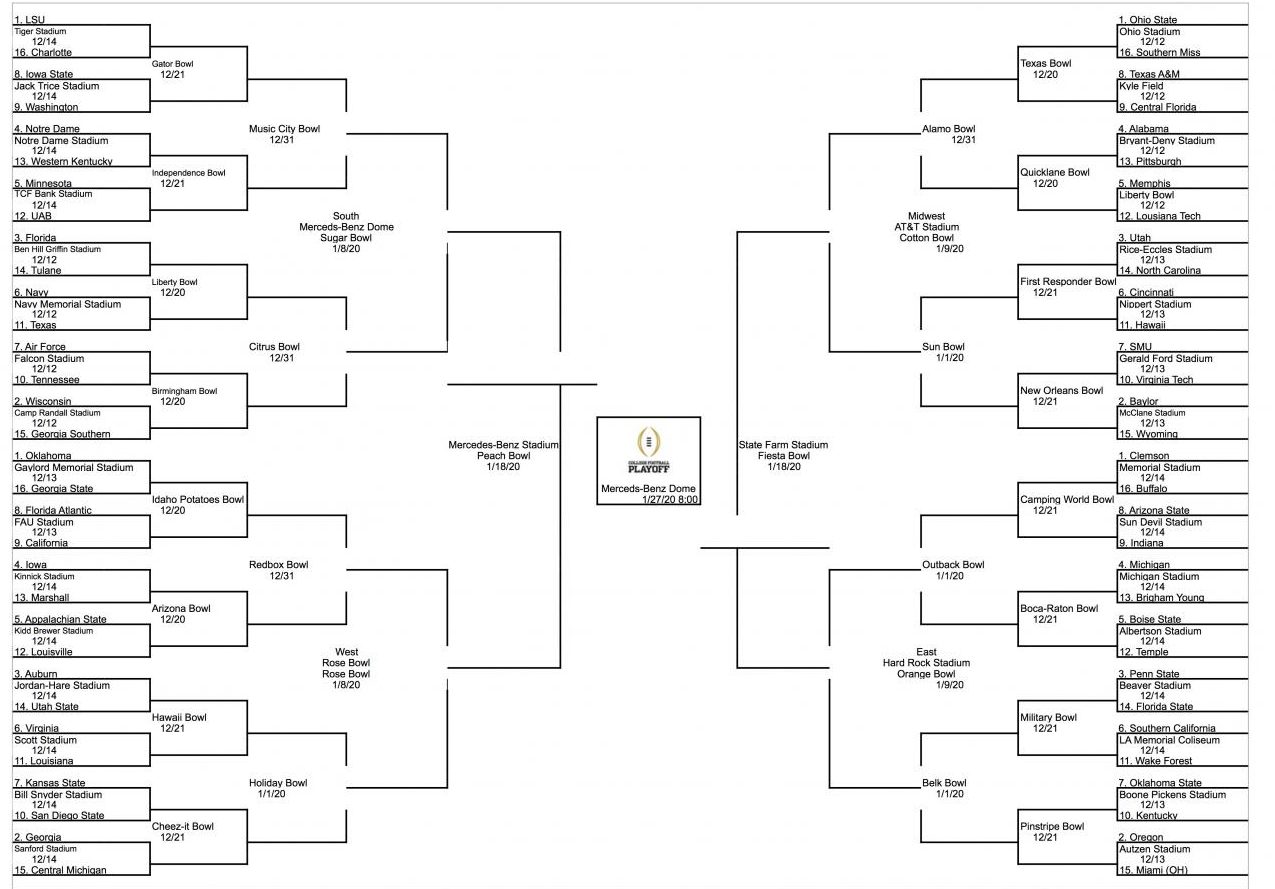December Madness?
What if the college football playoff had 64 teams?

The Real 2020 Title Game is set for January 13th in NOLA
It’s finally here (almost!). The season started way back in August with 130 teams playing 12 games each. FBS college football this year was crazy! And now we have just come to the sixth iteration of the College Football Playoff. This year’s bracket sees #1 LSU playing #4 Oklahoma while #2 Ohio State plays #3 Clemson, with the winners of each facing off in the National Championship in New Orleans.
But what if the CFP was the size of the NCAA Division I Basketball Tournament (minus the play-in games)? For the past three years, I’ve put together a 64-team college football tournament, and this year was no different. A few parameters before we get started: the real CFP teams are the #1 seeds and the semifinal bowl matches up accordingly were the bracket to go chalk, the top six seeds are based on the 12/8 CFP rankings with the remaining teams filled in with other rankings and lower vote getters from those polls as well as ESPN FPI rankings and all conference champions. All first round games are at the higher-seeded team’s home stadium, with all the other games which are are real-life bowl games, the timeframe is shifted to account for the increased slate, and all scores are from ncaagamesim.com.
Here is our original bracket:

Using the simulator, I moved through the whole bracket to get to the “Final Four” aka the real College Football Playoff. Unsurprisingly, three of the four teams in the semifinals of my bracket made the actual CFP, with only four seed Alabama bucking the trend. Of course, the semifinals are true to real life as far as location/bowl game though the timeframe is significantly shifted. Each quarterfinal was one of the remaining CFP bowls that will be semifinals in one of the next two years.
In the South region, we saw every higher-seeded team win in the first and second rounds, save an early upset of Air Force by Tennessee and a second-round decisive win for #5 Minnesota over #4 Notre Dame. The quarterfinals and semifinals were chalk with LSU (the top overall seed) defeating Wisconsin for a place in the Peach Bowl. In the West, the only first round win for the road squad was a narrow escape for California at FAU while fifth-seeded Appalachian State used a solid first round victory to spring them to a touchdown win over Iowa in the Arizona Bowl. However, they fell by two scores to #1 Oklahoma (fourth overall seed). On the bottom of the region, we saw #3 Auburn avenge a regular season loss to #2 Georgia with a field goal victory before falling to Oklahoma by ten points.
On the other side of the bracket, an eight point victory for Virginia Tech at SMU gave us the only double-digit seed in the second round of the Midwest region. While VT fell to #2 Baylor (seventh overall seed), six seed Cincinnati beat third seed Utah by fifteen points before #4 Alabama put up thirty one to beat #1 Ohio State (third overall seed) and 38 to defeat Baylor in the Cotton Bowl.
Finally, in the East region, #11 Wake Forest beat #6 USC(SoCal) by eleven. The second round saw our only 7-2 upset as Oregon dropped the Pinstripe Bowl to Oklahoma State as well as another victory for a five seed (Boise State over Michigan). The quarterfinals, however, still solidified Clemson’s spot in the Fiesta Bowl as they defeat Penn State 45-20.
As we got to the Final Four of sorts, LSU still took on Oklahoma in the Peach Bowl (as in real life) and defeated them 35-24 behind a strong performance from Heisman winner Joe Burrow. On the other side, Clemson went on to win the Fiesta Bowl, in this case once again facing Alabama in the playoff and winning by a touchdown. However, LSU still came away with the big dub 28-24 in the National Championship in New Orleans, which is famously close to the LSU campus in Baton Rouge.
And here is the completed bracket:

Reminder: These games are all predicted by online through a simulator and not by me. The whole thing is hypothetical and tries to use real-world factors as much as possible. Enjoy but don’t abuse.







